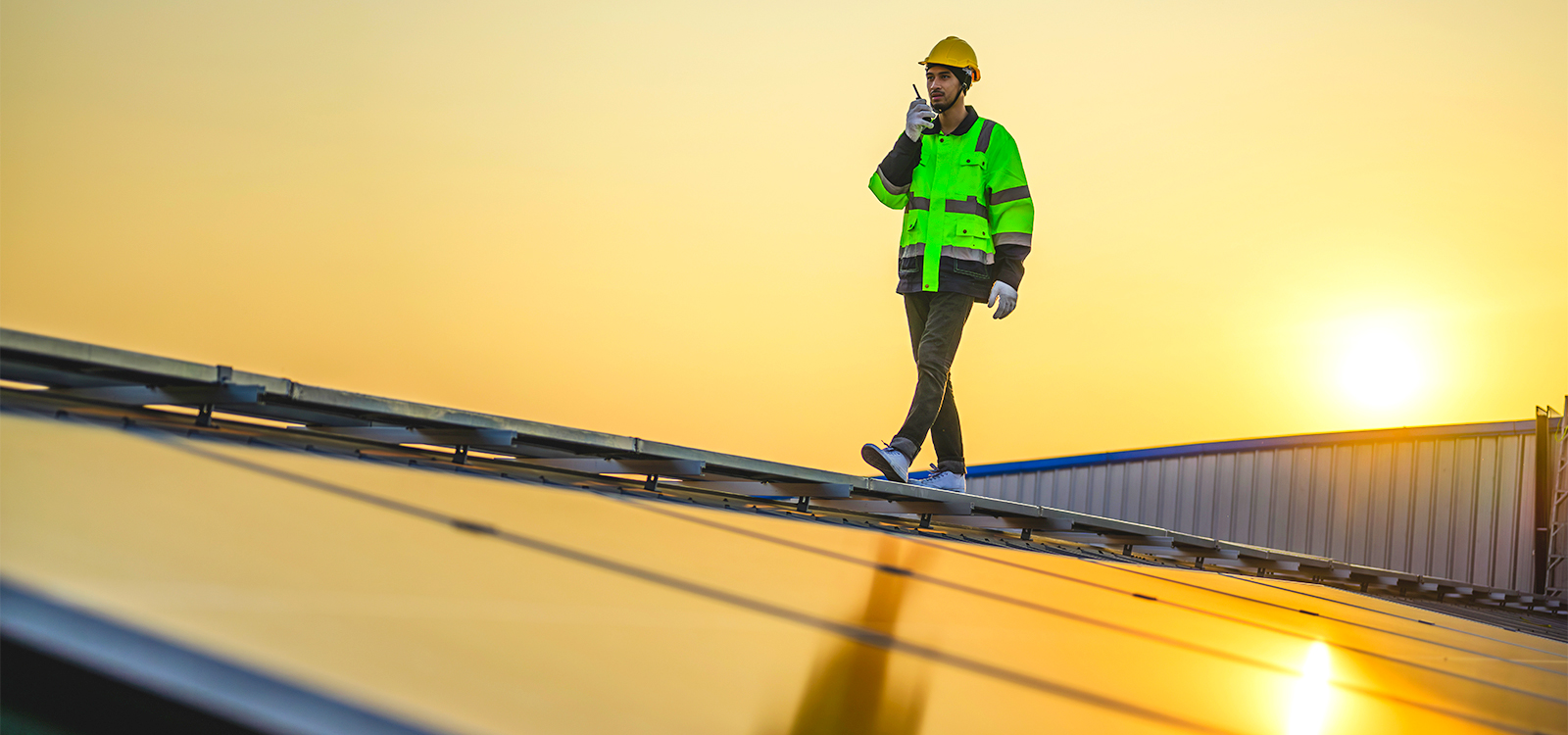Ever wondered how solar panels convert sunlight into electricity?
If you’re looking at getting a solar system, the most logical piece of equipment is the solar panels themselves. But contrary to popular belief, the panels don’t capture heat from the sun. The way these panels work is a true testament to the magic of science.
It’s, like, science and stuff
Solar panels work through a process called the photovoltaic effect (which is where they get the name PV panels from, too). Imagine your solar panel as a big net that catches photons — essentially “particles of light”. When sunlight hits the panel, these photons come in contact with silicon, a material known for its superb ability to absorb light. The silicon gets excited by the incoming photons and releases electrons. These free-roaming electrons generate an electric current, essentially turning sunlight into usable electricity.
The more photons your panel catches, the more electrons get excited and break free, resulting in more electricity. So, in essence, the better your solar panels are at capturing photons, the more electricity you get. And when it comes to solar panels, you’ve got options.
Types of panels
First up are Monocrystalline panels, the sports cars of the solar world. They’re made from a single crystal structure, making them the most efficient. But this also makes them the most expensive. Next are Polycrystalline panels that are reliable and less expensive, but don’t pack the same efficient punch as Monocrystalline panels. They’re made from multiple crystal structures, which means they’re good but not great at converting sunlight to electricity. Finally, there are Thin-Film panels — the most affordable and super flexible in terms of where you can install them, but they’re the least efficient type of PV panel.
But panels by themselves aren’t much use
The electricity generated by your PV panels is direct current (DC). The problem is that everything that uses electricity in your home, office, or factory needs alternating current (AC).
This is where an inverter comes in – it acts as the translator that converts this DC power into AC: it makes sure the electricity from your solar panels speaks the same ‘language’ as your home, making the entire system harmonious and functional.
What about when the sun isn’t shining?
Storage is the key to ensuring an uninterrupted power supply, and you’ve got two options to consider.
First, there are grid-tied systems, which act like an “energy bank,” storing any excess power you generate back into the electrical grid for future use. The second option is utilizing lithium-ion batteries, serving as your personal energy vault. These batteries store generated power, allowing you to tap into your own reserve whenever you need it, whether it’s day or night.
Both options have their benefits, so your choice will depend on your specific energy needs and goals.
Take the guesswork out of solar systems
Solar energy is an essential part of ensuring business sustainability as the world moves towards more renewable energy sources (not to mention the ongoing load-shedding challenges). With benefits like low maintenance, cost-effectiveness, and environmental advantages, there’s no better time to switch to solar.
The best part?
You don’t need to worry about which PV panels are the best option (we only use monocrystalline panels to ensure optimal energy production). A contract with Sosimple gives you access to cheap, clean energy while we take care of all the science behind the system.
Ready to take the plunge? Contact Sosimple at https://www.sosimpleenergy.co.za/contact-us/



